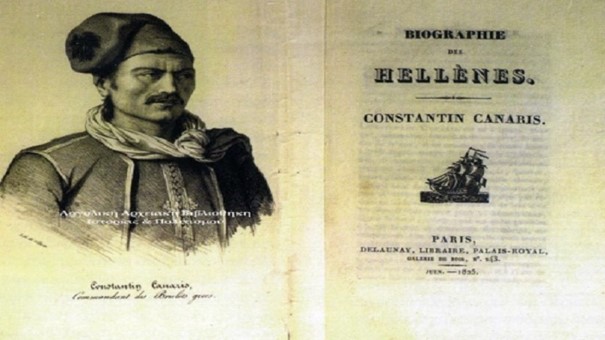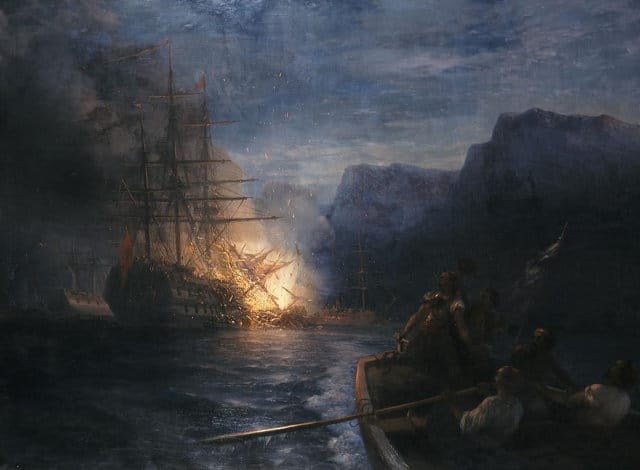The destruction of the Ottoman flagship took place on the night from the 6th to the 7th of June 1822, just off the Greek island of Chios.
The event, which happened during the Greek War of Independence, was a retaliation for the massacre of Greeks living in Chios, that occurred two months earlier. In the burning of the flagship, 2,000 Ottoman sailors were slain, including the famous Nasuhzade Ali Pasha.
Torching the Turkish flagship:
The Greek War of Independence against the Ottoman Empire began in March 1821. It was an 8-year battle often referred to as ‘agonies‘ – “the struggle.” The revolution would result in Greece’s independence from the Ottomans after over 400 years of oppression.
In 1822, a year after the beginning of the war, Ottoman armies landed on and attacked the Greek island of Chios, killing around 30,000 locals and about 50,000 Greeks were kidnapped and sold as enslaved people in Izmir and Istanbul.

Turkish officers gathered on the flagship of the Turkish armada to celebrate the end of Ramadan. Pipinos attempted to burn the flagship’s rear, but despite significant damage it did not sink.
Kanaris organized to attach a ship he set alight to the Ottoman flagship. The Ottoman flagship ‘Mansue al-liwa’ was an 84 gun ship and was full of gunpowder storage.
The flames from Kanaris’ fireboat reached the gunpowder storage, causing an explosion and sinking the ship. Approximately 2,000 men on board were killed, including Kara Ali, the perpetrator of the Chios massacre.
Kanaris’ accomplishment was quickly spread around Europe.
His action inspired famous European artists like Eugene Delacroix, Victor Hugo and Von Hess. A British historian wrote that he is the most outstanding and essential representation of Greece’s courageousness and bravery.

